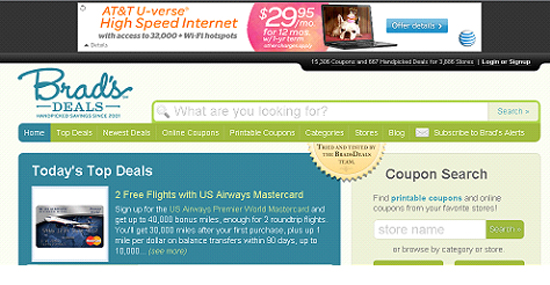As we enter the heart of the fourth quarter, competition for premium placement on affiliate websites increases. Home page banners, inclusion in holiday promotions, and dedicated emails all offer different sets of benefits. Deciding on which placement to proceed with will depend on your product, your consumer, and prior performance data.
Identifying Opportunities
The first step in evaluating potential paid placements involves identifying opportunities. Reach out to affiliates and request their rate card. This will identify available placements and associated costs. A good rate card will also provide ballpark impressions or traffic data, so that you can estimate a return on investment based on your own conversion and transaction data. At this point, all you are doing is gathering information so that you have a broad overview of existing placements and associated pricing.
If you aren’t partnered with an affiliate, or if you are languishing in its integration queue, requesting a rate card and securing a placement could go a long way in building the relationship. For one, retailers with paid placements are typically prioritized in the integration queue, so inclusion on the affiliate site could be guaranteed not only just for the holidays, but also for the long run.
It is also important to know that having an affiliate marketing channel doesn’t preclude you from participating in these placements. Typically, paid holiday placements involve a fixed fee. However, you may be able to offset this fee by agreeing to pay a percentage of any resulting transactions. For example, if a three-day home page placement costs $1,500, you may negotiate that cost down to $1,000 with a 5 percent revenue share.
There are typically three types of placements available on affiliate sites: banner placement, affiliate-driven holiday promotions, and email.
Banner Placements
Banner placements are traditional image ads on an affiliate site. These placements could be located on the home page, on a category page, or perhaps they run site-wide. An example of a site-wide run would a 728×90 banner that appears at the top of the site, no matter what page the visitor is on, similar to the AT&T U-verse ad in the example below.

AT&T U-verse site-wide banner ad example.
The effectiveness of banner placements will likely depend on the overall objective. If the objective is to get as many impressions as possible, then a home page or site-wide placement on a highly trafficked affiliate site will certainly meet your needs. However, if your objective is to drive revenue, then you may want to consider a category placement. For example, if you are a jewelry retailer, an ad banner in the jewelry category of an affiliate site will position your brand in front of a targeted audience that is considering a jewelry purchase. Impressions may be lower than what you would get from a home page placement and traffic from the affiliate site to yours may be lower. However, you will likely see a stronger conversion rate.
Affiliate-driven Promotions
Participation in affiliate-driven holiday promotions is a good alternative to traditional banner advertising. Many affiliates will run promotions targeted to their own user base. To illustrate, consider Ebates.com, a site where users earn cash back on their online purchases. During the holidays, Ebates might offer double cash back in an effort to engage their members. Retailers can pay a fixed placement fee, on top of commission, to secure inclusion in the double cash back promotion.
Participation in affiliate-driven promotions is beneficial because affiliates will usually put quite a bit of promotional effort to drive user engagement in these events. Going back to the double cash back example, Ebates might send out an email to its entire member base, notifying them that additional earning opportunities are available with select merchants, or they might also promote the double cash-back offer on the home page of the site. So while you may not get specific brand exposure, you are getting increased impressions as a result of the affiliate’s own marketing efforts.
Dedicated Email
The other placement opportunity to consider as the holiday season approaches is dedicated emails. This is typically a customer acquisition tactic, as the retailer will partner with an affiliate that has a desired target demographic. With a dedicated email, the affiliate will work with the retailer to design an email that is sent to the affiliate’s subscriber base. In a dedicated email, the messaging is focused entirely on a single retailer, and like any other email campaign, the success will depend not just on a clear, relevant call to action. It will also depend on the demographic. A benefit of a dedicated email is that the retailer can define the target demographic based on what it knows about its clientele. For example, if a retailer’s most profitable users are urban women between the ages of 25 and 35, they can have the affiliate target the email campaign to anyone on their list who meets that criterion.
Part of affiliate marketing is choosing placements and partners that achieve the highest return on investment. Start with an informed decision, and then continually revisit and test that decision to ensure continual growth. While you will likely build a portfolio of proven placements, be receptive to new promotions and opportunities that could perform better.




